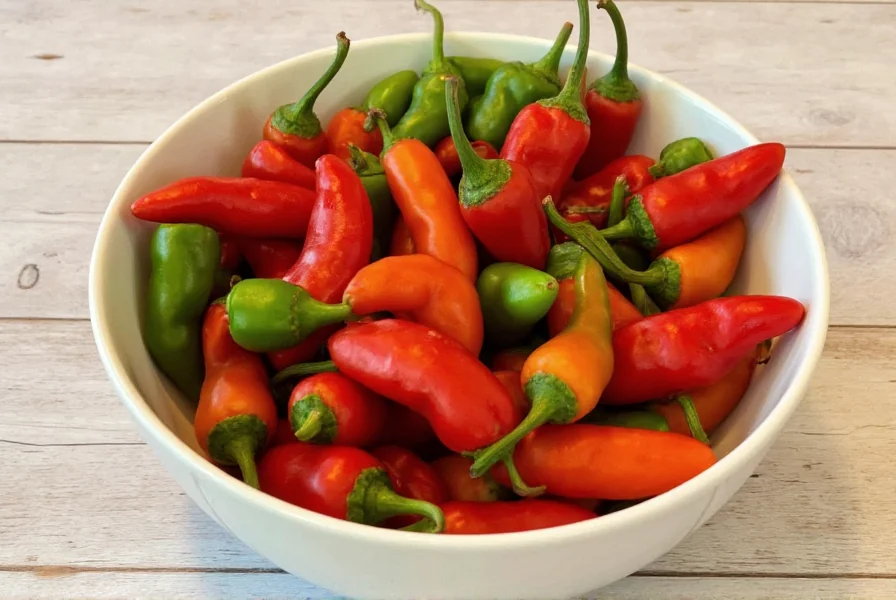What Are Scoville Heat Units?
Created by pharmacist Wilbur Scoville in 1912, the Scoville Heat Unit (SHU) scale measures capsaicin concentration in peppers. Modern HPLC testing provides precise readings, but SHU values still reflect human sensitivity to heat.
For context:
- 0–700 SHU: Bell peppers (no heat)
- 2,500–8,000 SHU: Jalapeño peppers
- 15,000–30,000 SHU: Cayenne peppers
- Over 1,000,000 SHU: Carolina Reaper (world's hottest pepper)

Factors Affecting Jalapeño Heat
Jalapeño heat varies significantly due to:
- Growing conditions: Drier, hotter climates increase capsaicin production
- Ripeness: Green jalapeños are milder; red ones are hotter and sweeter
- Plant stress: Drought or pests trigger higher heat levels
- Pepper parts: Heat concentrates in white pith and seeds; removing them reduces spice
| Pepper | Low SHU | High SHU |
|---|---|---|
| Jalapeño | 2,500 | 8,000 |
| Poblano | 1,000 | 2,000 |
| Habanero | 100,000 | 350,000 |
| Cayenne | 30,000 | 50,000 |
Jalapeño vs Other Peppers
Jalapeños are hotter than poblanos (1,000-2,000 SHU) but milder than serranos (10,000-23,000 SHU), habaneros (100,000-350,000 SHU), and ghost peppers (1,000,000+ SHU).
Cooking Tips for Jalapeños
- Remove seeds and white pith for milder dishes
- Wear gloves when handling to avoid skin irritation
- Roast or smoke for deeper flavor
- Use dairy or vinegar to counteract excessive heat

Buying Guide
What to Look For
- Firmness: Choose peppers that feel solid, not soft
- Color: Green = milder; red = hotter and sweeter
- Smooth skin: Avoid wrinkled "mushroom" jalapeños for fresh use
| Type | Best For | Flavor Profile | Recommended Sources |
|---|---|---|---|
| Green Jalapeños | Stuffing, pickling, salsas | Mild, grassy, crisp | Local farmer's markets, Trader Joe's |
| Red Jalapeños | Hot sauces, grilled dishes | Sweeter, spicier, earthy | Costco, Sprouts Farmers Market |
| Dried/Smoked (Chipotles) | Stews, marinades, BBQ rubs | Smoky, rich, complex | Chamoyera, La Costeña |
Frequently Asked Questions
How many SHU is a typical jalapeño pepper?
Jalapeños typically range from 2,500 to 8,000 Scoville Heat Units (SHU), making them moderately spicy for most people.
Why do jalapeños have such a wide heat range?
Growing conditions (soil, climate), ripeness (red is hotter than green), plant stress, and genetics cause significant variation in SHU values.
How can I reduce jalapeño heat when cooking?
Remove seeds and white pith (where capsaicin concentrates), and pair with dairy or acidic ingredients like lime juice or vinegar.
Final Thoughts
Jalapeños' 2,500-8,000 SHU range offers perfect versatility for both mild and spicy dishes. Understanding growing factors and preparation techniques lets you control heat levels precisely for any recipe.












 浙公网安备
33010002000092号
浙公网安备
33010002000092号 浙B2-20120091-4
浙B2-20120091-4